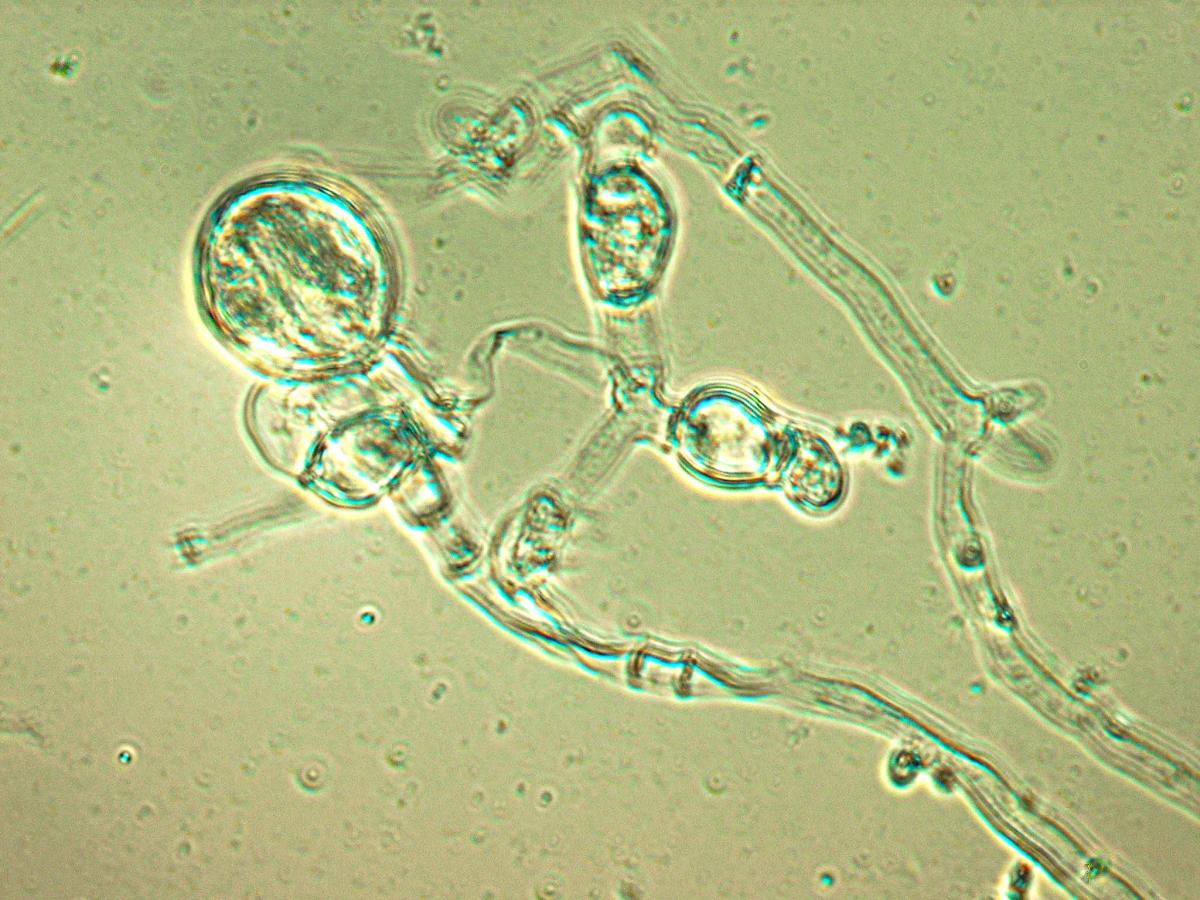About the Project
 |
| P.I.: |
George Weinstock (BCM-HGSC) |
| Collaborators: |
Katherine Aronstein (USDA, Subtropical Agricultural Research Center) |
| Funding: |
USDA/ARS |
| Grant#: |
|
| Genome size: |
estimated 24 Mbp |
| Strain: |
0.5-1A and A10 |
Current Status of the Project
| Latest assembly date: |
6-01-2006 |
| Total number of reads: |
256,859 |
| Coverage: |
4x |
| Number of contigs: |
8,092 |
| N50 contig size: |
2,967 bp |
| Number of scaffolds: |
1,627 |
| N50 scaffold size: |
44,063 bp |
Search the Sequence
You can download the data from our FTP site.
Related Links
Policy on Data Release
|
Ascosphaera apis is the fungal cause of the honey bee (Apis mellifera) larval disease chalkbrood. Spores of this fungus germinate within the digestive tract of bees, then begin mycelial growth during the last instar of larval development. Dead larval and pupal bees appear chalky thanks to growth throughout the bee of mycelia. These chalky 'mummies' are highly infectious, and spores of this fungus often reinfect colonies via stored food supplies or direct transport to younger larvae by adult bees working within the nest. Adult bees reduce the effects of this fungus on the colony by frequently identifying and removing diseased individuals. The disease is associated with high brood density (productivity) and cooler outside temperatures.
References for Ascosphaera apis and chalkbrood
Anderson DL, Gibbs AJ, and Gibson NL. 1998. Indentification and phylogeny of spore-cyst fungi (Ascosphaera spp.) using ribosomal DNA sequences. Mycol. Res. 102(5):541-547.
Qin H, Welker DL, Youssef NN. 1993. Isolation and characterization of a linear plasmid from the entomopathogenic fungus Ascosphaera apis. Plasmid. 29(1):19-30.
Williams DL. 2000. A Veterinary Approach to the European Honey Bee (Apis mellifera). The Veterinary Journal. 160:61?7.
Michael Hornitzky. 2001. Literature review of chalkbrood?a fungal disease of honeybees.(Rural Industries Research and Development Corporation).
